top of page
Sensory Storytelling
September 2022-June 2023
Every day, various stimuli affect our well-being, but our sensory needs are so unique that it is difficult to describe them, and even more so, to create products that will be friendly and universal at the same time. Therefore, how to use creative practices to discuss matters of comfort? Are co-design and democratic design effective tools for creating solidary products that have the potential to improve users' well-being?
The Sensory Storytelling project was conducted in collaboration with a group of 12 adult autistic students from the Share Community in London. The project focused on studying users’ sensory preferences within an educational environment and aimed to collectively design school decoration elements that would improve students' well-being and help them manage stress through multisensory therapy and stimulation. The main part of the project was a series of workshops and testing sessionsthat included discussion, art activities, and working on pictograms and worksheets. During the meetings, mostly non-verbal, students learned about various methods to effectively communicate and visualise their needs. The project resulted in creating a collaboratively designed, modular textile set for group sensory integration therapy, which will be returned to the school and further tested in terms of their functionality.
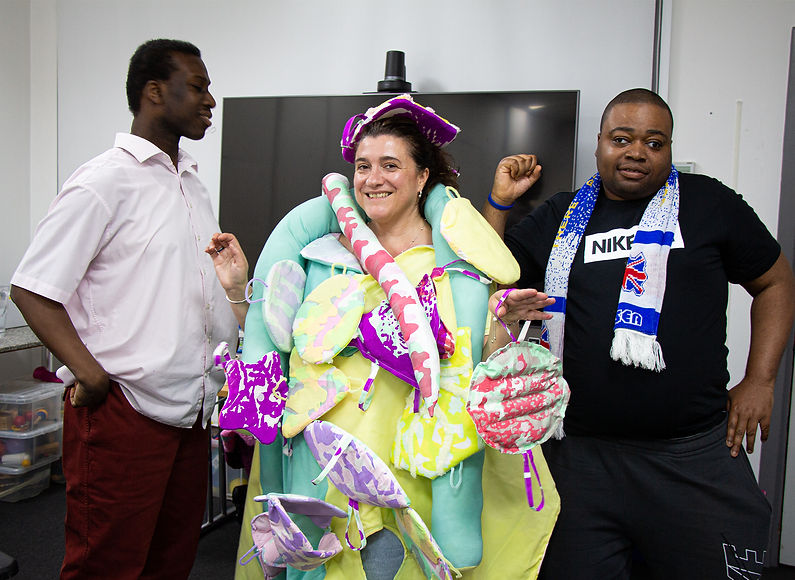

Modular set that improves autistic users' well-being through group therapy and multisensory stimulation.
Workshops and research carried out during the project have proven that art-making has the most soothing and therapeutic effect on participants. The product can be used by students in the classroom or sensory rooms as a toy, a mobile classroom decoration, or a customisable tool for creating collages. The kit can also be used by teachers to teach students about senses or conduct creative group work.
Through the variety of textures, the elements provide the user with various visual, tactile, olfactory, auditory, and interactive experiences. Prints and decorations are made by methods of screen printing, laser cutting, puff binder, and quilting; some of the patches and snakes are filled with weighted or soft material and sound-producing shapes. Moreover, some elements attract the user's attention with their scent (lavender) and an interactive thermochromic print that changes colour. The patches have hooks and Velcro buttons for attaching them to the mat or tangling together in 3D objects.
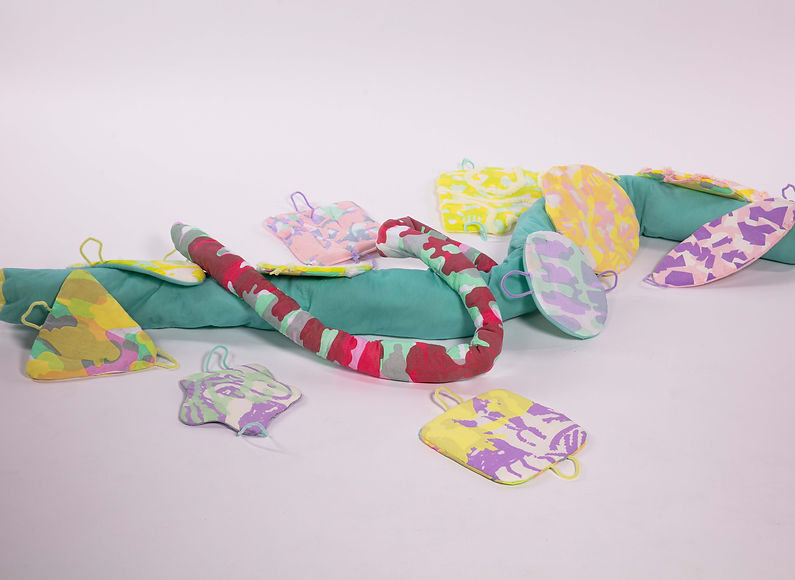
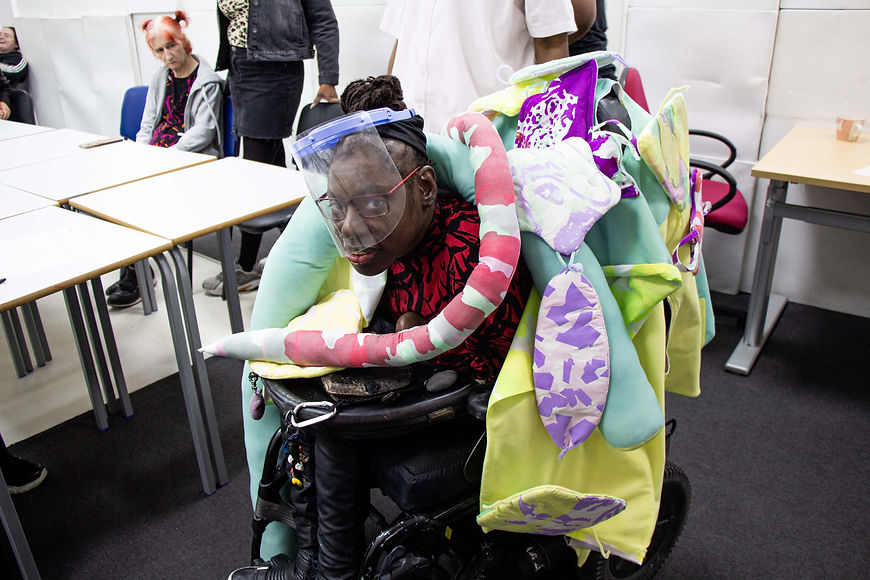
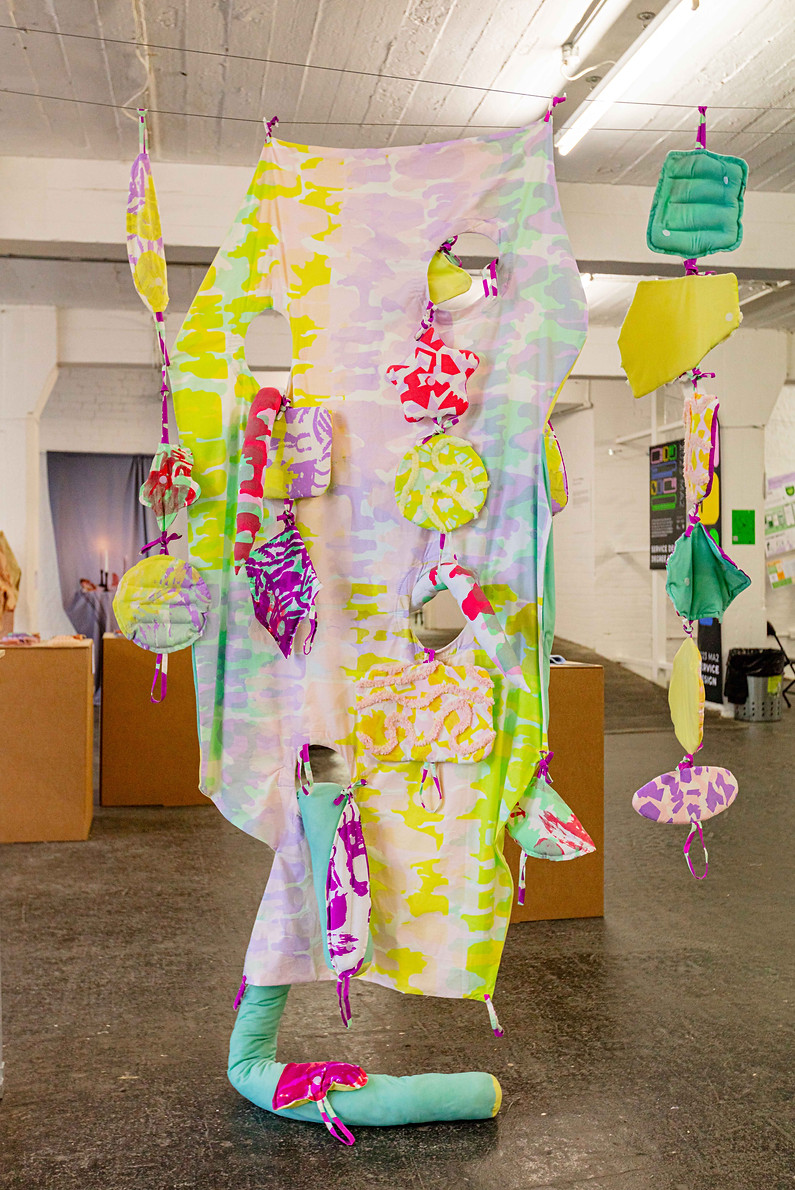
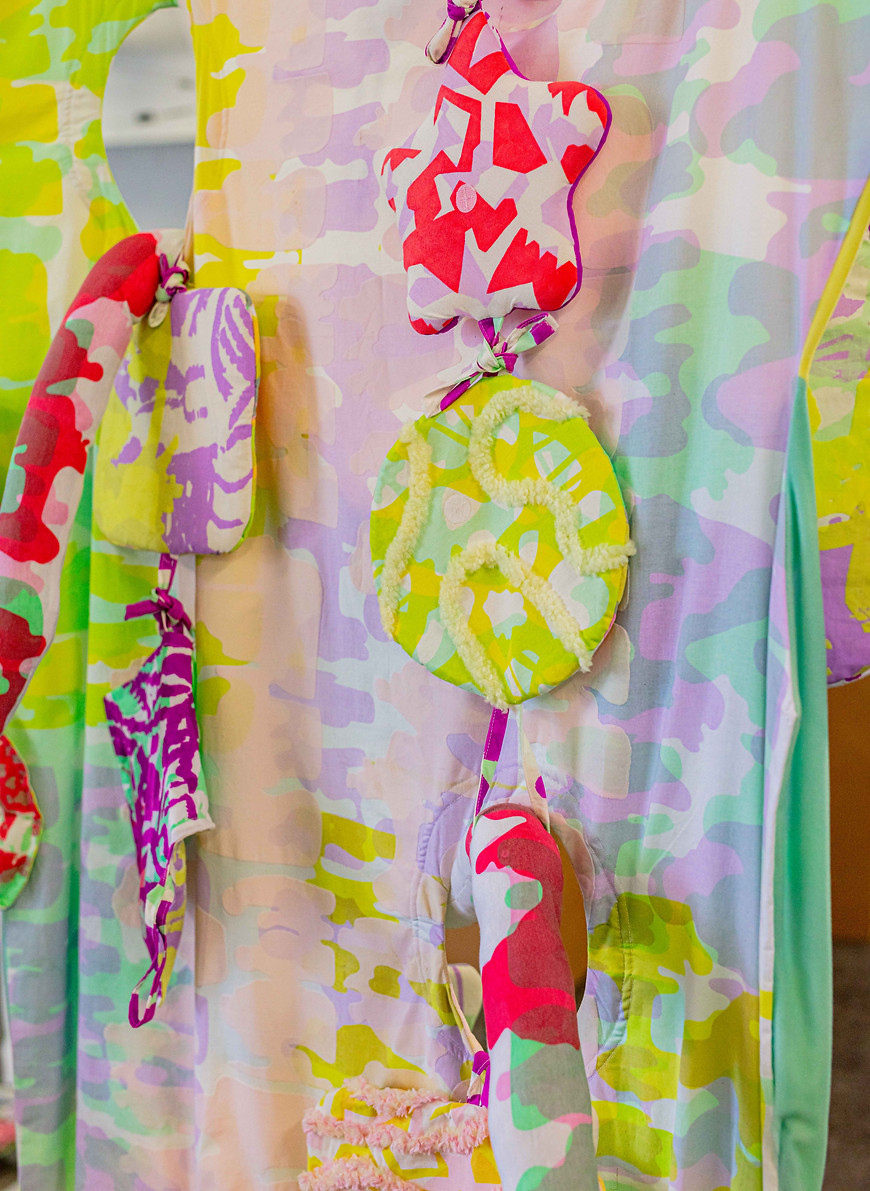
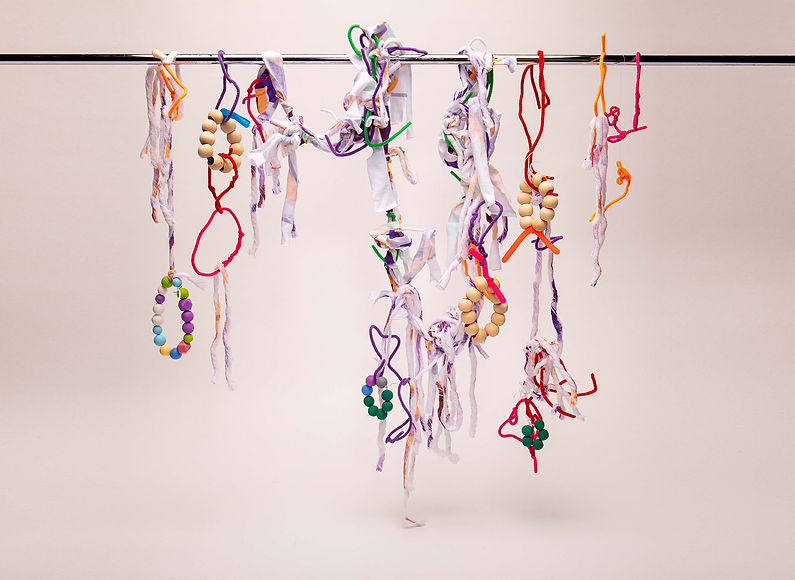
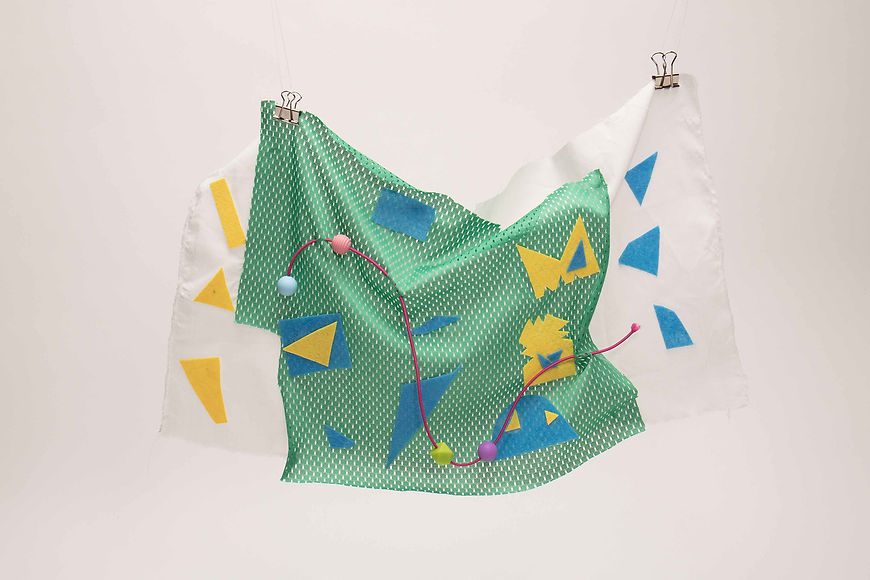
Artworks expressing group's sensory identity
During workshops and testing sessions, students from Share explored their sensory preferences by engaging in inclusive worksheets, pictograms and art activities. This resulted in unique works of art visualising the group’s sensory identity, that have been recontextualized into new holistic art installations and inspirations.
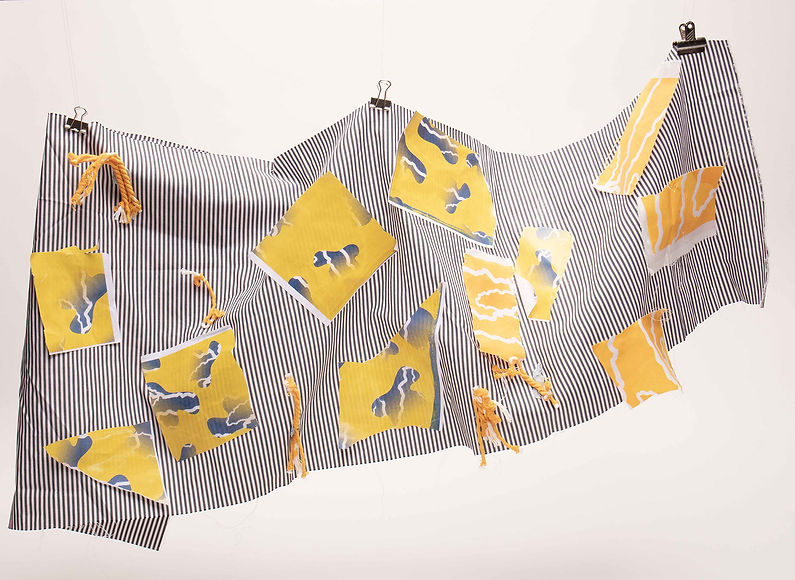
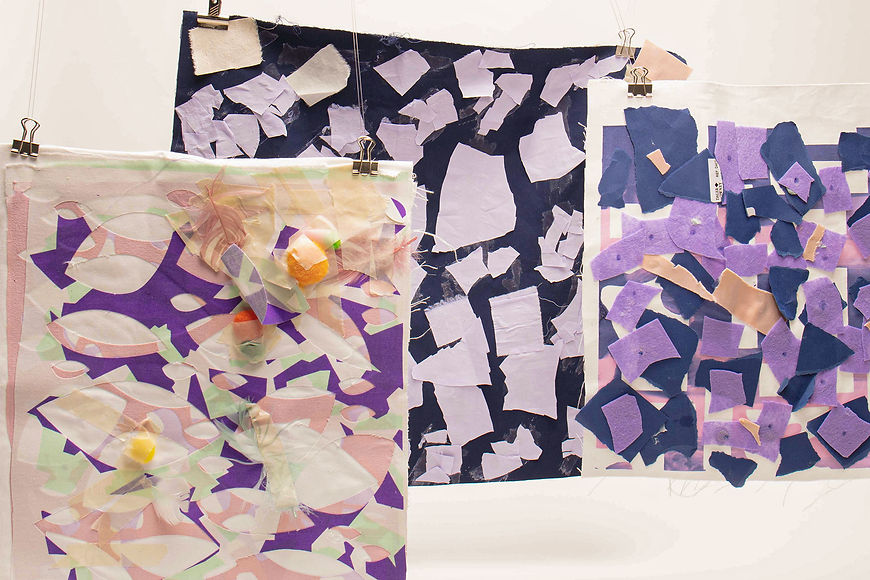
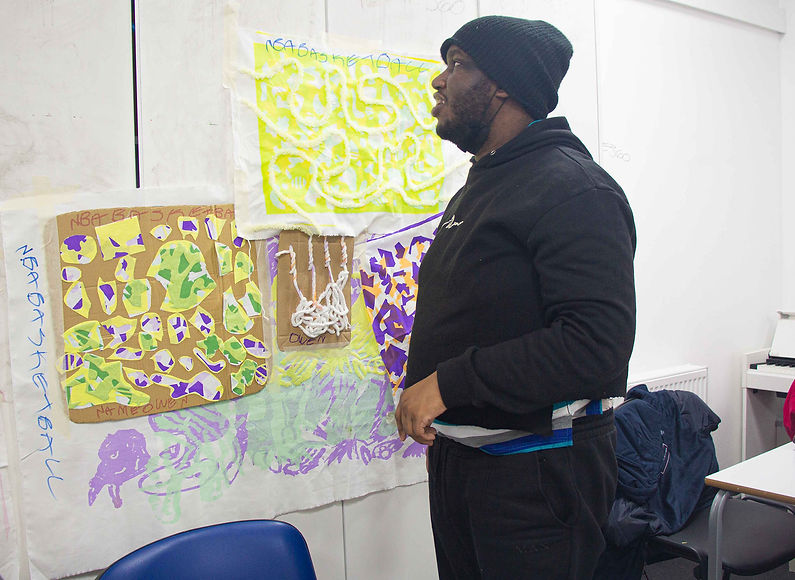
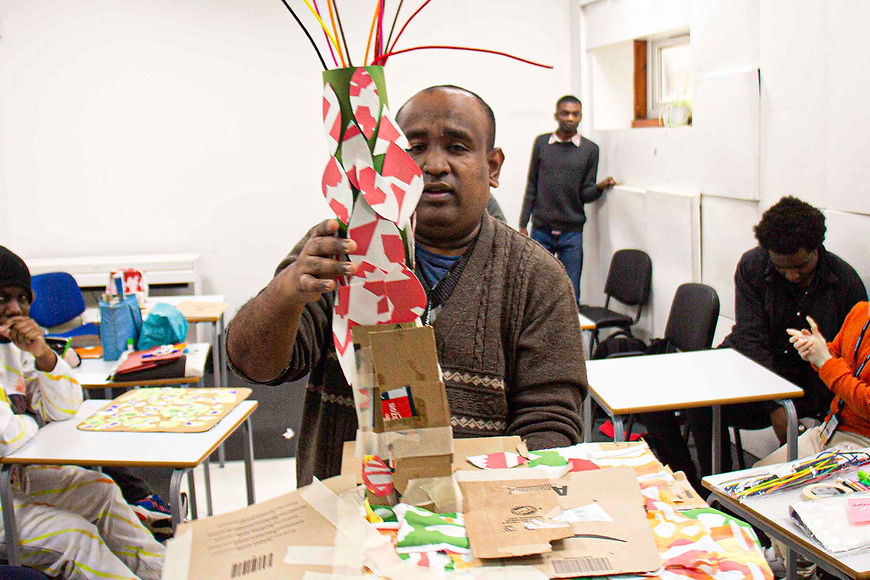
bottom of page